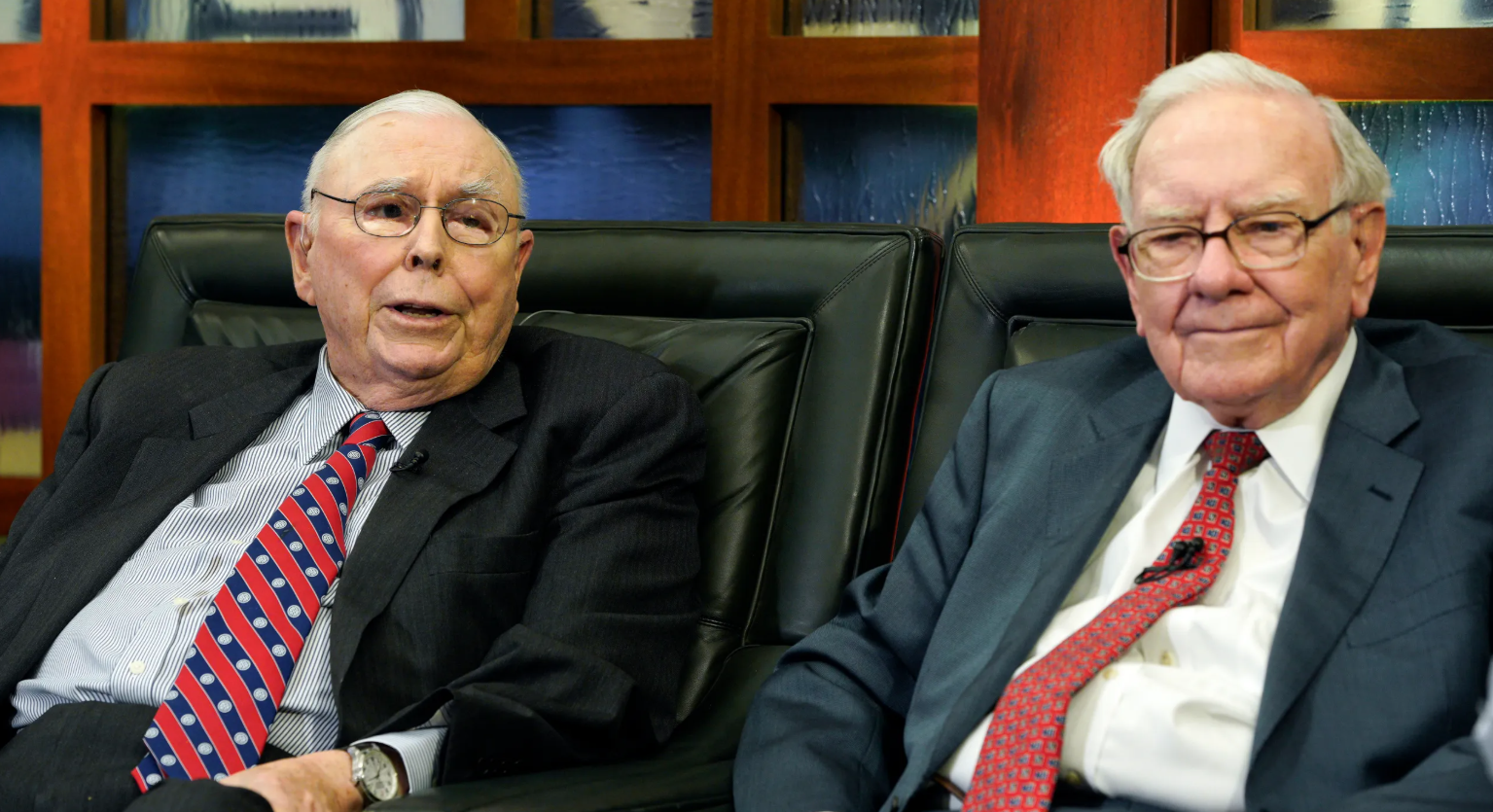Discover how Warren Buffett and Charlie Munger mastered investing without complex math. Learn their timeless principles, including business fundamentals, moats, management quality, and the power of patience.
In a world flooded with algorithms, technical indicators, and high-frequency trading, it’s easy to believe that only mathematical wizards can succeed in the world of investing. Yet, Warren Buffett and Charlie Munger—two of the most successful investors in history—proved otherwise. Their legendary partnership at Berkshire Hathaway reshaped modern investing and demonstrated that understanding businesses, not just numbers, is the real key to wealth building.

In this blog, we’ll explore how Buffett and Munger thrived using a strategy that didn’t rely on complex mathematical formulas or advanced quantitative models. Instead, their secret lay in mastering business fundamentals, understanding human behavior, and sticking to a few simple, time-tested principles. Let’s break down their approach and see how it can still be applied by investors today, regardless of market noise or technological complexity.
Understanding the Business
One of the most important pillars of Buffett and Munger’s investing style is understanding the business itself. This might sound obvious, but in today’s market where traders often buy stocks based on trends, social media hype, or algorithmic signals, it’s surprisingly rare.
Buffett famously said, “Never invest in a business you cannot understand.” This doesn’t mean you need to be an industry expert in every company, but you should have a clear idea of:
- What the company does
- How it makes money
- Who its customers are
- What makes it better than its competitors
If these questions can’t be answered clearly, the business is probably too complicated or risky for long-term investment.
Munger echoed this by often saying that if something is too complex, they simply pass. They never pretended to understand businesses like tech startups in their early days or companies with erratic cash flows. Simplicity was a strength, not a weakness.
Competitive Advantage: The Moat Concept
Another central idea in Buffett and Munger’s investing thesis is the idea of a moat—a term borrowed from medieval castles. In business terms, a moat is a company’s ability to maintain its competitive advantage over time.
Buffett looks for companies with wide moats, which can come from:
- Strong brand loyalty (e.g., Coca-Cola)
- Economies of scale (e.g., Walmart)
- Network effects (e.g., Apple or Visa)
- Cost advantages (e.g., GEICO)
- Regulatory protections or licenses (e.g., utilities)
These advantages make it difficult for competitors to enter the market and chip away at profits. A strong moat ensures the company will likely continue to generate healthy returns for years, if not decades.
The beauty of this approach is that it doesn’t require complex statistical models. All you need is a deep understanding of the business landscape and how a company stands out in it.
Management Quality: Betting on the Right People
Another overlooked but crucial factor in Buffett and Munger’s investing approach is management quality. While many investors focus solely on balance sheets and earnings reports, Buffett often said he invests in leaders he admires and trusts.

Buffett and Munger believe that even the best business models can fail if led by poor managers. They look for executives who are:
- Honest and transparent
- Aligned with shareholder interests
- Excellent capital allocators
- Long-term thinkers
A great business with poor management is like a Ferrari with a reckless driver—it might look great for a while, but it’s bound to crash.
One of their most famous examples is their investment in American Express after the “salad oil scandal” of the 1960s. While other investors fled, Buffett trusted the management and the core brand value—and it paid off immensely over the years.
Simplicity Over Complexity: The Power of Common Sense
Buffett and Munger were never fans of Wall Street’s obsession with complex financial models. In fact, Munger once criticized the overuse of complicated math in investing, calling it “twaddle.”
Instead, they believed that common sense, discipline, and patience were far more important. They used basic metrics like:
- Return on equity (ROE)
- Debt-to-equity ratio
- Consistency of earnings
- Free cash flow
These straightforward indicators often told them more than pages of convoluted formulas. They avoided speculative growth stocks and stuck to businesses with real earnings, sustainable cash flow, and clear value.

Their approach debunked the myth that only math geniuses can become wealthy investors. What you need is clarity, patience, and a logical framework—not a Ph.D. in statistics.
The Power of Patience and Compound Growth
One of the most profound lessons from Buffett and Munger’s playbook is the importance of patience. Investing isn’t about chasing quick returns—it’s about compounding over time.
Buffett often referred to compound interest as the eighth wonder of the world. By investing in solid businesses and holding onto them for decades, they allowed their capital to multiply almost effortlessly.
Take Coca-Cola, for example. Berkshire Hathaway bought the stock in 1988. More than three decades later, the value of that investment has grown exponentially, not because Buffett was trading it, but because he held it through ups and downs.
This “buy and hold” philosophy stands in stark contrast to today’s fast-paced trading culture. But for those willing to wait, the rewards can be staggering.
Margin of Safety: Avoiding Permanent Losses
A key idea borrowed from Buffett and Munger’s mentor Benjamin Graham is the concept of a margin of safety. This means buying a stock only when it’s trading significantly below its intrinsic value.
Why? Because even if you make a mistake in your calculations, the lower price provides a cushion against permanent losses.
Buffett once explained it like this: “If you buy something for half what it’s worth, you don’t need to be that smart—you just need to be cautious.”
It’s a simple yet powerful way to minimize risk while maximizing reward.
Stay in Your Lane
Another essential principle they followed was the Circle of Competence—invest only in what you truly understand. This principle saves investors from overreaching into industries or companies they can’t accurately evaluate.
Buffett and Munger didn’t invest in dot-com stocks during the 1999 tech bubble—not because they hated tech, but because they didn’t understand the long-term viability of those business models at the time.
As a result, they avoided the catastrophic losses that followed when the bubble burst.
Staying within your circle of competence keeps you grounded and reduces the risk of speculative errors. You don’t need to know everything—just a few things really well.
Real-World Applications for Modern Investors
Even in today’s digital and data-driven investment environment, Buffett and Munger’s principles remain more relevant than ever.

If you’re an investor trying to navigate volatile markets, consider these actionable takeaways:
- Invest only in businesses you understand.
- Look for durable competitive advantages.
- Prioritize management quality.
- Avoid over-complicating your strategy.
- Be patient—let compounding do the heavy lifting.
- Stick to your circle of competence.
- Buy with a margin of safety.
You don’t need to be a quant analyst to win at investing—you just need to be disciplined, informed, and emotionally stable.
Warren Buffett started investing with $114.
— Decade Investor💸 (@DecadeInvestor) June 25, 2023
He is now worth over $112,100,000,000.
His 12 best tips on becoming rich🧵: pic.twitter.com/PRKFXBOnu9
Take Control of Your Financial Journey with Binance
In today’s dynamic and decentralized financial landscape, having access to powerful yet user-friendly tools is essential. If you’re looking to explore the digital asset market while applying timeless investment wisdom, Binance has you covered.
As one of the world’s largest and most trusted crypto exchanges, Binance empowers millions of users to trade cryptocurrencies, monitor portfolios, and grow wealth—all in one secure platform. With zero-fee conversions, real-time charting tools, and dedicated 24/7 customer support, Binance makes it simple for anyone to trade on the go—anytime, anywhere.
Here’s what makes Binance an ideal platform for investors:
- User-Friendly Interface: Intuitive mobile and web experiences for beginners and pros alike.
- Advanced Tools: Auto-investment options, detailed trade history, and customizable price alerts.
- Security First: Industry-leading security protocols to protect your assets.
- Global Access: Available in multiple languages, regions, and regulatory environments.
Whether you’re new to crypto or looking to expand your investing portfolio, Binance gives you the tools you need to invest confidently and responsibly.
Warren Buffett and Charlie Munger left behind not just billions of dollars in value, but a legacy of rational, principle-driven investing. They proved that you don’t need complicated equations or high-speed computers to build long-term wealth—you need wisdom, patience, and discipline rooted in sound investing principles.
Their philosophy is a reminder that common sense and thoughtful analysis still beat hype and speculation. As you consider your own investing journey, take a page from Buffett and Munger’s book: focus on the business, respect the process, and let time do its magic.
Also Read :
Warren Buffett’s Crash Strategy: 7 Steps to Smart Investing
Top 10 Future-Proof Careers to Watch in the New Economy Era
Top 10 Highest Paying Jobs in the World
Unlocking the Secrets of Breakout Stocks with Technical Analysis

